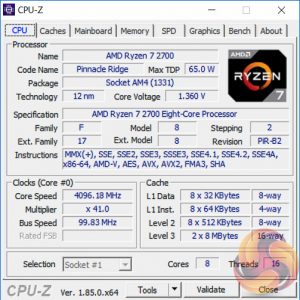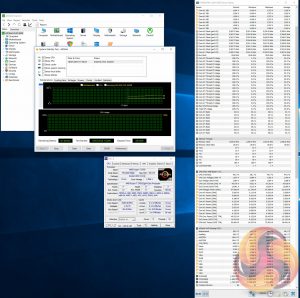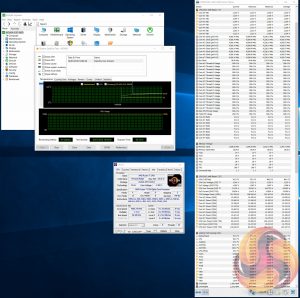Manual CPU Overclocking:
To test the ASRock Fatal1ty X470 Gaming-ITX/ac motherboard’s CPU overclocking potential, we set the CPU core voltage no higher than 1.4V and push for the highest stable clock speed. We maintain the DRAM frequency at 3200MHz to take memory stability out of the overclocking equation. Once the highest clock speed for 1.4V is achieved we see if there is potential to reduce the voltage while maintaining system stability.
Overclocking was a straightforward affair, we were able to get the system to boot and be stable at 4.1GHz with 1.35 volts. 4.2GHz was not possible without exceeding 1.4 volts. CPU-Z read the core voltage as 1.36v under overclocked load while the AMD CPU reported it as 1.344. Either way the voltage had tapered off slightly under load but not enough to cause instability or concern.
Motherboard Sensors
In terms of available sensor readings there was nothing that specifically identified as a VRM temperature. The “Motherboard” temperature rose from 50 at stock to 56 at load but it is not clear if that reflects the chipset, VRMs or some other sensor location.
There were no indicative signs of thermal throttling after extended loading but given the compact size of the heatsink it is highly recommended to ensure sufficient airflow to the CPU VRM region when building any system with a high TDP Ryzen CPU (95-105W) or any other overclocked Ryzen CPU using 1.3 volts or more.
Overclocked Performance
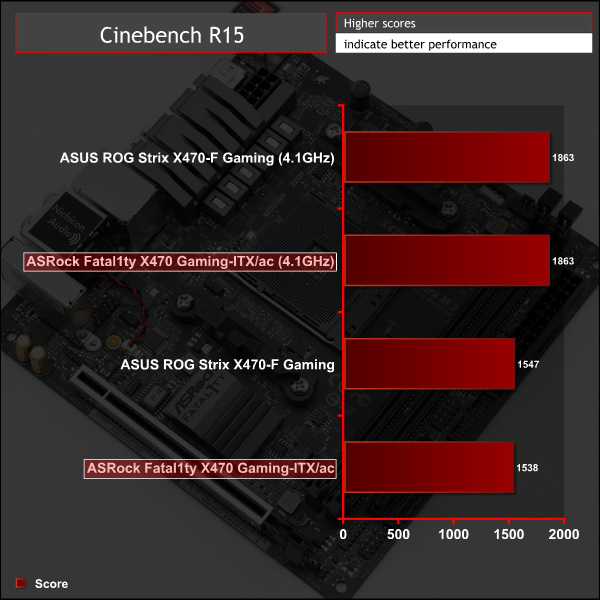
Overclocked performance was as expected and kept up with the ASUS X470-F.
Power
We leave the system to idle on the Windows 10 desktop for 10 minutes before taking a reading. For CPU load results we run AIDA64 CPU, FPU, Cache and Memory stress tests and take a reading after 10 minutes. The power consumption of our entire test system (at the wall) is shown in the chart.
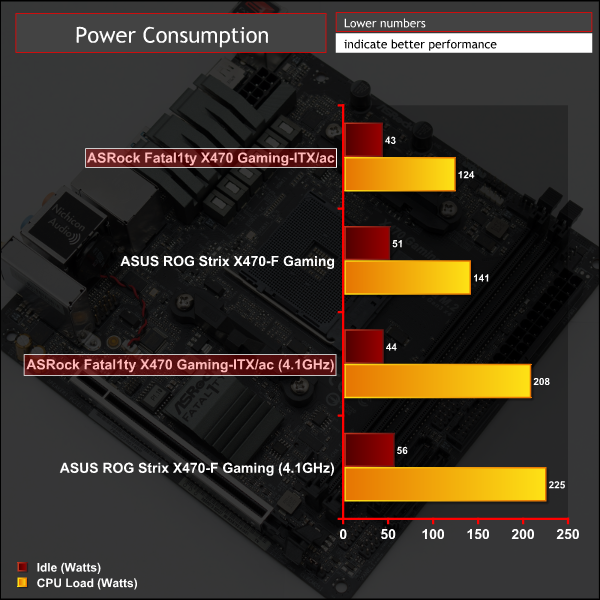
Power consumption was noticeably lower on the ASRock ITX motherboard compared to the ASUS X470-F under stock and overclocked loads, likely due to lower voltages and fewer system devices.
 KitGuru KitGuru.net – Tech News | Hardware News | Hardware Reviews | IOS | Mobile | Gaming | Graphics Cards
KitGuru KitGuru.net – Tech News | Hardware News | Hardware Reviews | IOS | Mobile | Gaming | Graphics Cards


